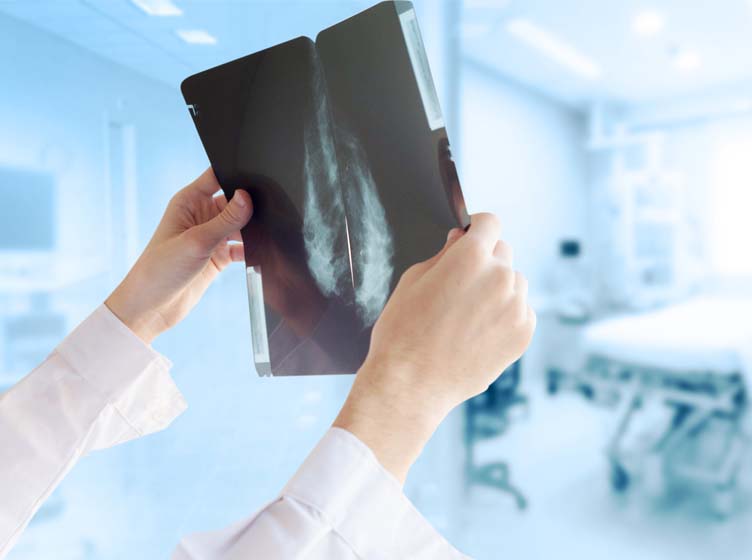Breast calcifications – their definitions and types
In many women, especially after menopause, calcium deposits commonly known as calcifications accumulate in the breasts. They are small enough not to be noticeable in palpation.
The bigger ones, so-called macrocalcifications (e.g., adenofibroma), may be visible in an ultrasound examination, but it is easier to evaluate their shape in a mammography examination. In order to cause an acoustic shadow visible in the ultrasound examination, calcifications must be appropriately large. They often resemble an inkblot or a piece of popcorn and are usually benign. Calcifications occurring in malignant lesions are too small to cause this phenomenon, which is why they are more easily observable in mammography than in ultrasound.
The issue of microcalcifications is a more complex one, as there are many types, varying in shape and type of deployment within the breast parenchyma and, above all, in character: benign or malignant.
Most microcalcifications visible on mammography images are benign, appearing as dispersed, punctate, heavily saturated shadows scattered throughout the breast or occurring on the courses of blood vessels (within the walls).
Unfortunately, there are also irregular microcalcifications that form clusters, which may be the first and only sign of breast cancer. They form in quickly dividing neoplastic cells even before the development of the tumor mass, and have no additional vascular network; therefore, they are not visible in ultrasound or thermography examinations.
It is important to keep in mind that mammography has the highest sensitivity in detecting both benign and suspicious-looking microcalcifications.
If during a mammography examination a radiologist determines the presence of a suspicious-looking microcalcification cluster, it is necessary to verify the finding via biopsy under the guidance of mammography (stereotactic biopsy). Collected material in the form of tissue rolls is transferred to the laboratory for evaluation under a microscope by a pathomorphologist.
During biopsy, the doctor implants a titanium marker in place of the removed microcalcifications, so that the site is visible on control mammography images.
If the histopathological examination confirms the presence of suspected cancerous cells, surgery will be necessary, and the surgeon will be able to easily remove a larger tissue area thanks to the marked site.
1. T. A. Stavros; Ultrasonografia Piersi; Radiology Imaging Associates; Polish Edition, Warsaw 2007.
2. L. Tabor, T. Tot, P. B. Dean; Rak Piersi – wczesne wykrywanie przy użyciu mammografii; Polish Edition, Warsaw 2010.
3. K. Wardzyńska, E. Wesołowska; Zasady kwalifikacji zmian gruczołu piersiowego wykrytych w badaniu mammograficznym według systemu BI-RADS; Journal of Oncology, 2010; Volume 60, Number 2; 136–146.




Sign In
Create New Account